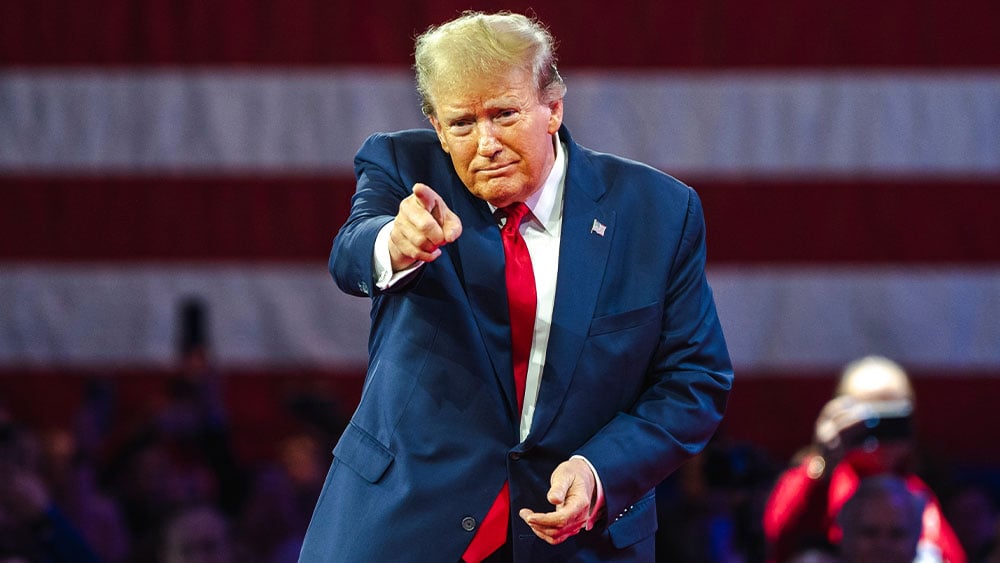Pharmaceutical Tariffs Land Wednesday; Why Drug Stocks Are Celebrating
Drug stocks are celebrating in the wake of President Donald Trump’s threat to levy a 100% tariff on pharmaceutical imports starting Wednesday.
That’s because the tariff won’t apply to most members of the Big Pharma club or generic drugs, says Monica Gorman, a supply chain expert and managing director at advisory firm Crowell Global Advisors, which focuses on trade, investment, health, digital technology and other areas.
The tariff only applies to branded products from companies that don’t have a manufacturing presence in the U.S. That gives the pharmaceutical industry two big loopholes.
Most pharmaceutical companies — like Pfizer (PFE), Eli Lilly (LLY) and Amgen (AMGN) — already have a manufacturing presence stateside. And, more than 90% of prescriptions in the U.S. are filled as generics, Gorman told Investor’s Business Daily.
“If the (pharmaceutical tariffs) included generics, I think we would be in a completely different situation because that is where we lack domestic manufacturing,” she said. “Generic drugmakers are breathing a sigh of relief because their options to onshore, and build out, domestic manufacturing capacity are much more limited.”
Generics Avoid Pharmaceutical Tariffs
Shares of IBD’s Medical-Ethical Drugs industry group rose 1.5% on Friday, the day Trump posted on X that he would levy a 100% tariff beginning Oct. 1 on “any branded or patented Pharmaceutical Product, unless a Company IS BUILDING their Pharmaceutical Manufacturing Plant in America.”
Similarly, the Medical-Biomed/Biotech industry group jumped 2%.
The major biopharma exchange-traded funds also advanced between 1% and 3%.
The pharmaceutical industry is facing a short- and long-term problem, says Gorman.
Generic drugs are inexpensive. Their margins are razor thin. So, while some generics makers might have enough capital to stand up manufacturing in the U.S., it doesn’t make sense to do so. Put another way: It’s too expensive to make generic drugs stateside.
“The warnings that we saw coming from many places around drug shortages if tariffs were placed on generic drugs, those were very real,” she said. “And that was a real issue that the administration would have faced if generics were phased towards tariffs.”
National Security Concerns
The long-term challenge is more complicated and pharmaceutical tariffs won’t solve it, she said.
The U.S. is incredibly dependent on other countries for generic drugs and, in particular, on China for antibiotics, she said. Trump has also spoken about the antibiotic dependence on China.
“There are very real national security concerns related to pharmaceuticals and blockchains,” she said. “Those very real dependencies on foreign adversaries for certain key generic drugs remain. So, the question I have is will the administration tackle them in some other way since they appear to be excluded from this particular tariff?”
Andy Sherman, the U.S. general manager for Fictiv, says the pharmaceutical tariffs highlight how fragile the supply chain for medications actually is. Fictiv helps companies manage manufacturing challenges, including navigating the supply chain.
“Pharma supply chains that are too centralized or reliant on a single geography are inherently fragile,” he said in an email to IBD. “Companies that already have diverse, distributed production options will weather these shocks more smoothly than those tied to a narrow set of overseas plants.”
But, Gorman and Sherman say, it can take up to five years, or longer, to stand up a pharma plant.
“In the near term, I expect to see more companies turning to U.S.-based manufacturers who already have capacity,” Fictiv’s Sherman said. “Announcements will come quickly — within the next year or so — but meaningful net new output will lag until the 2030s.”
Can Biotech Companies Survive?
In the meantime, smaller biotech companies could struggle, they say. Biotech companies often rely on larger, third parties to manufacture their products. They tend to focus on licensing and royalty deals or even acquisitions to commercialize their drugs.
There’s a risk the pharmaceutical tariffs could stamp out some of biotech innovation, says Sherman.
“The real risk is for smaller biotechs that may have to choose between funding science and investing in manufacturing,” he said. “So yes, there could be pressure on innovation, but it’s more about where and how companies allocate resources than about innovation stopping altogether.”
Meanwhile, the pharmaceutical tariffs will likely prove to be a paperwork nightmare for companies that import their active pharmaceutical ingredient, Crowell’s Gorman said.
“Because drugs typically haven’t been tariffed in the past, there’s questions in terms of how accurate some of those countries of origin are and now that is going to matter a great deal,” she said. “There’s so many questions in terms of how this will be enforced.”
Follow Allison Gatlin on X/Twitter at @AGatlin_IBD.
YOU MAY ALSO LIKE:
Trump’s Plan To Lower U.S. Drug Prices Faces Big Test
MoonLake Crashes 90% On Mixed Results For Skin Disease Treatment
Looking For The Next Big Stock Market Winners? Start With These 3 Steps
Options Trading: How To Start Using Options, How To Manage Risk
Want To Get Quick Profits And Avoid Big Losses? Try SwingTrader


